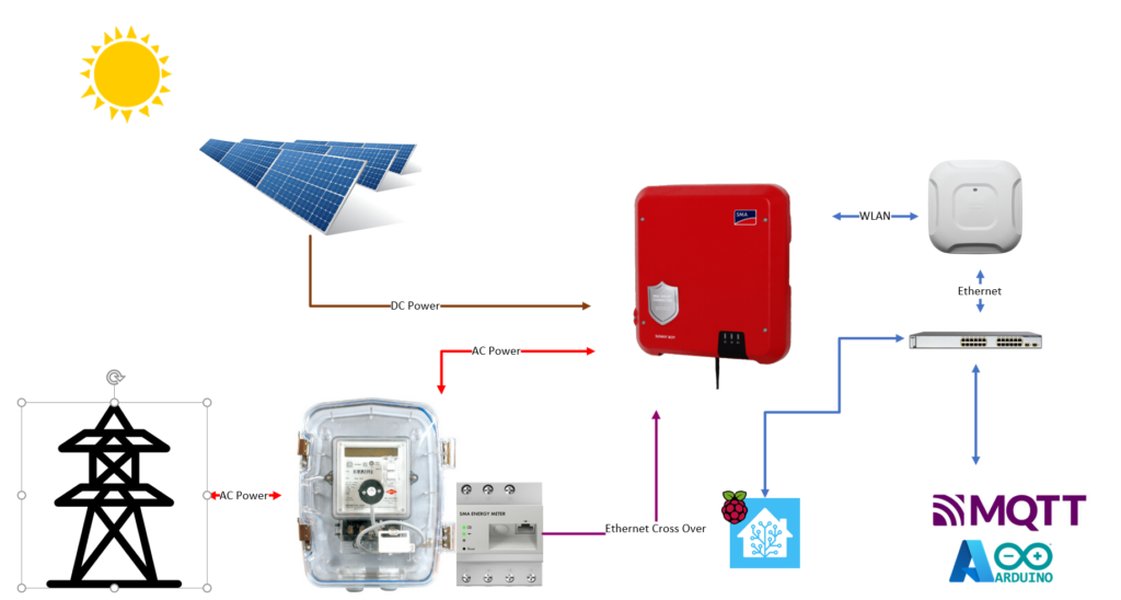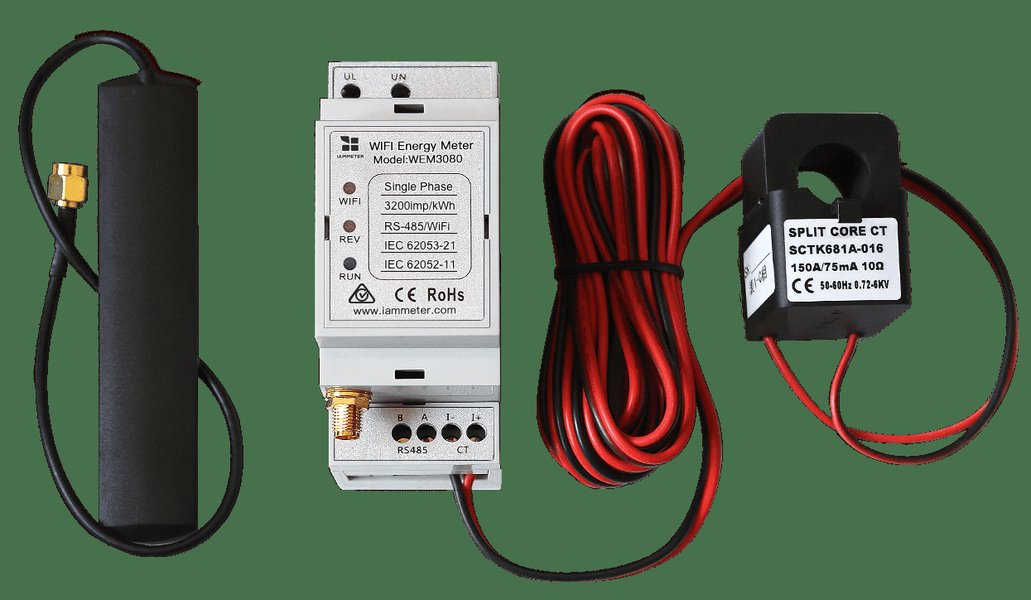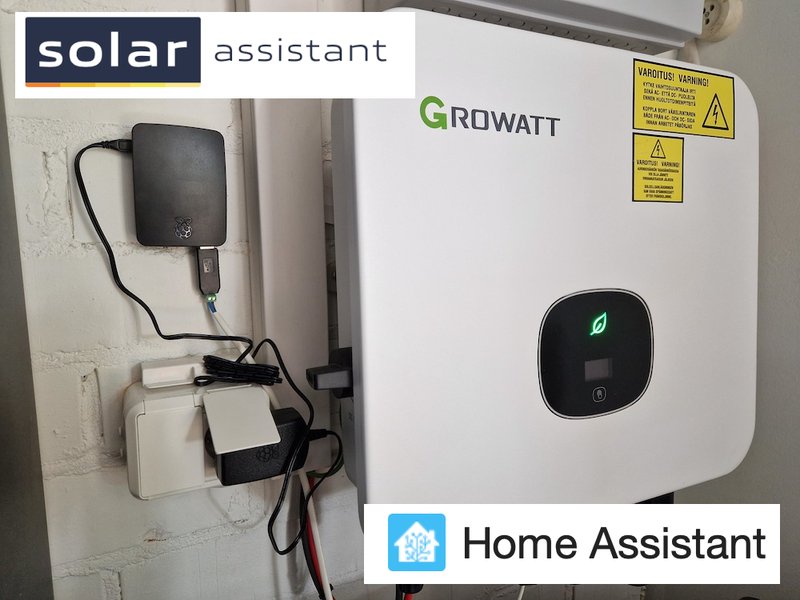
Unlocking Your Energy Data: How MQTT Seamlessly Connects Smart Meters and Inverters
Dive into the world of MQTT and discover its pivotal role in modern energy management for smarter homes and renewable systems.
MQTT (Message Queuing Telemetry Transport) has emerged as a cornerstone protocol for the Internet of Things (IoT), particularly revolutionizing how we monitor and manage energy. Its lightweight and efficient nature makes it ideal for connecting devices like smart meters and solar inverters, enabling real-time data exchange and sophisticated energy automation. This comprehensive guide explores the intricacies of MQTT integration with these critical components of modern energy systems.
Key Insights: MQTT in Energy Systems
- Real-time Monitoring: MQTT facilitates the immediate transmission of energy consumption and production data, allowing for dynamic adjustments and informed decision-making.
- Enhanced Interoperability: As a standard protocol, MQTT enables seamless communication between devices from various manufacturers, fostering a cohesive energy ecosystem.
- Scalable and Efficient: Its publish-subscribe model and low bandwidth requirements make MQTT perfectly suited for networks with numerous devices, including smart homes and distributed renewable energy sources.
Understanding MQTT: The Engine of IoT Communication
MQTT is a publish-subscribe, extremely simple and lightweight messaging protocol, designed for constrained devices and low-bandwidth, high-latency, or unreliable networks. Its architecture decouples message producers (publishers) from message consumers (subscribers) through a central message broker.

Conceptual overview of an MQTT-based energy monitoring setup.
Core Principles of MQTT
- Publish-Subscribe Model: Devices (clients) publish messages to specific "topics" on an MQTT broker. Other clients can subscribe to these topics to receive messages relevant to them. This means publishers and subscribers don't need to know about each other.
- MQTT Broker: The central server responsible for receiving all messages from publishers and routing them to the appropriate subscribers.
- Topics: Hierarchical strings (e.g.,
home/livingroom/temperature) that act as channels for messages. Clients publish and subscribe to these topics. - Lightweight: MQTT has a small code footprint and minimal network bandwidth usage, making it ideal for resource-constrained IoT devices.
- Quality of Service (QoS): MQTT offers three levels of QoS to ensure message delivery according to the application's needs:
- QoS 0: At most once delivery (fire and forget).
- QoS 1: At least once delivery (acknowledgment required).
- QoS 2: Exactly once delivery (most reliable, but highest overhead).
MQTT Integration with Smart Meters
Smart meters are crucial for modern energy management, providing detailed insights into electricity consumption. Integrating them with MQTT unlocks their data for various applications, from personal dashboards to sophisticated home automation.

Example of a Wi-Fi energy meter often used for MQTT integration.
How Smart Meters Leverage MQTT
Data Publishing
Smart meters, especially Wi-Fi enabled ones like those from IAMMETER, can natively publish a wealth of data to an MQTT broker. This data typically includes:
- Real-time voltage, current, and power (kW)
- Total energy consumed (kWh)
- Power factor and frequency
- Sometimes, gas and water consumption (if the meter supports it and is connected via a gateway)
For meters without native MQTT, such as those with a P1 port (common in Europe using DSMR/SMR standards) or pulse outputs, a gateway device (often based on ESP8266, ESP32, or Raspberry Pi) is used. This gateway reads data from the meter (e.g., via its P1 port, IR interface, or by counting pulses) and then publishes it to MQTT topics.
Hardware and Configuration
Various hardware solutions facilitate MQTT integration:
- Native MQTT Meters: Devices like IAMMETER's energy meters can be configured directly with MQTT broker details (address, port, username, password).
- Smart Meter Gateways: Devices connect to the smart meter's P1 port or read pulse outputs and translate this data into MQTT messages. Projects like
smartmeter2mqttor custom ESPHome firmware are popular for this. - CT Clamp Sensors: Current Transformer (CT) clamps connected to microcontrollers (e.g., ESP32 with PZEM-004T sensors) can measure current flow on specific circuits and publish this data via MQTT.
Configuration typically involves specifying the MQTT broker's address, port, and credentials, along with the topics to which data will be published.
Benefits for Energy Consumers
- Real-time Consumption Insights: Understand energy usage patterns almost instantly.
- Home Automation Integration: Use consumption data to trigger actions in systems like Home Assistant (e.g., turn off high-load devices during peak hours).
- Local Control and Privacy: By using a local MQTT broker, users can keep their energy data within their own network, enhancing privacy.
MQTT Integration with Inverters
Solar inverters, and increasingly battery inverters, are key components of renewable energy systems. MQTT integration allows for detailed monitoring of energy generation, storage, and system health.

Dashboard example displaying solar inverter data, often facilitated by MQTT.
Powering Inverter Monitoring with MQTT
Data Publishing from Inverters
Inverters can provide critical data about solar energy production and battery status. This data, when published via MQTT, includes:
- Current solar power generation (W or kW)
- Daily and total energy produced (kWh)
- Battery charge/discharge status, state of charge (SoC %), voltage, and current
- Grid import/export power
- Inverter operational status and fault codes
- AC output voltage, current, and frequency
Integration Methods
Similar to smart meters, inverters integrate with MQTT in several ways:
- Native MQTT Support: Some modern inverters come with built-in MQTT capabilities.
- Protocol Bridging: Many inverters communicate using industrial protocols like Modbus (RTU or TCP), RS485, or CAN bus. Microcontrollers (ESP8266/ESP32) or single-board computers (Raspberry Pi) act as bridges. They poll data from the inverter using its native protocol and then publish it to MQTT topics. Software projects like
Sofar2mqtt(for Sofar inverters),Solar2MQTT(for MPPT inverters using WatchPower protocol), or custom scripts are common. - Manufacturer APIs and Cloud Polling: While less direct, some setups involve polling data from the manufacturer's cloud service and then republishing it to a local MQTT broker for integration with other systems.
Advantages in Renewable Energy Systems
- Optimized Energy Use: Real-time generation data allows for intelligent load shifting (e.g., running washing machines when solar output is high).
- Battery Management: Monitor battery health and optimize charging/discharging cycles.
- Performance Tracking: Detect underperformance or faults in the solar array or inverter quickly.
- Grid Interaction Control: In advanced setups, MQTT can facilitate commands to control grid feed-in or battery discharging based on dynamic tariffs or grid stability needs.
Architecting an MQTT-Powered Energy Management System
A typical energy management system using MQTT involves several key components working in concert. Smart meters and inverters act as data sources (publishers), sending their information to an MQTT broker. This broker then disseminates the data to various subscribing applications, such as home automation platforms, databases for long-term storage, and visualization tools.
Visualizing the MQTT Ecosystem
The mindmap below illustrates the interconnected components in an MQTT-based energy monitoring and management setup. At the heart is the MQTT Broker, connecting various devices and services.
(e.g., Mosquitto, EMQX)"] DataSources["Data Sources (Publishers)"] SmartMeters["Smart Meters
(Consumption, Grid Data)"] P1Port["P1 Port (DSMR/SMR)"] WiFiMeters["Wi-Fi Native MQTT Meters
(e.g., IAMMETER)"] PulseCounters["Pulse Output Meters + ESP"] CTClamps["CT Clamp Sensors + ESP"] Inverters["Inverters (Solar/Battery)
(Generation, Storage Data)"] NativeMQTT["Native MQTT Support"] ModbusBridge["Modbus (RS485/TCP) + Bridge"] CANBusBridge["CAN Bus + Bridge"] ProprietaryAPI["API/Cloud + Bridge"] DataConsumers["Data Consumers (Subscribers)"] HomeAutomation["Home Automation Platforms"] HomeAssistant["Home Assistant"] OpenHAB["OpenHAB"] NodeRED["Node-RED (Processing/Automation)"] DataStorage["Data Storage & Analysis"] TimeSeriesDB["Time-Series Databases
(e.g., InfluxDB, Prometheus)"] SQLDatabases["SQL Databases"] Visualization["Visualization Tools"] Grafana["Grafana Dashboards"] PlatformDashboards["Built-in Dashboards
(Home Assistant Energy)"] Alerting["Alerting Systems"] Security["Security Layers"] Authentication["Username/Password"] Encryption["TLS/SSL"]
This interconnected system allows for flexible and powerful energy management, from simple monitoring to complex automation routines designed to optimize energy efficiency and cost savings.
MQTT's Role in Home Automation: The Home Assistant Example
Home automation platforms like Home Assistant extensively leverage MQTT to integrate a vast array of devices, including smart meters and inverters. Home Assistant can act as both an MQTT broker (via an add-on like Mosquitto) and an MQTT client.
Integrating Energy Data into Home Assistant
Once smart meter or inverter data is published to MQTT topics, Home Assistant can subscribe to these topics and represent the data as sensors. This is often configured via YAML or through MQTT Discovery if supported by the publishing device/gateway.
Example Sensor Configuration (YAML)
Here's a conceptual example of how an MQTT sensor for electricity consumption might be defined in Home Assistant's configuration.yaml:
mqtt:
sensor:
- name: "Smart Meter Energy Consumption"
state_topic: "iammeter/WEM3080T_xxxxxxxx/power" # Example topic
unit_of_measurement: "W"
device_class: "power"
state_class: "measurement"
value_template: "{{ value_json.power }}" # If payload is JSON
- name: "Smart Meter Total Energy"
state_topic: "iammeter/WEM3080T_xxxxxxxx/kwh" # Example topic for total energy
unit_of_measurement: "kWh"
device_class: "energy"
state_class: "total_increasing"
value_template: "{{ value_json.total_energy }}" # If payload is JSON
- name: "Solar Inverter Power Output"
state_topic: "solar_inverter/main/power_output" # Example topic
unit_of_measurement: "W"
device_class: "power"
state_class: "measurement"
# Add value_template if needed
- name: "Solar Inverter Daily Yield"
state_topic: "solar_inverter/main/daily_yield" # Example topic
unit_of_measurement: "kWh"
device_class: "energy"
state_class: "total_increasing"
# Add value_template if needed
With device_class: energy and state_class: total_increasing, these sensors can be directly integrated into Home Assistant's powerful Energy Dashboard, providing visualizations of energy consumption, solar production, battery usage, and grid interaction.
Automation and Control
Beyond monitoring, MQTT data enables sophisticated automations:
- Turn on/off appliances based on solar production or grid electricity prices.
- Adjust thermostat settings based on energy consumption patterns.
- Send notifications for unusual energy spikes or inverter faults.
- Optimize EV charging times based on solar availability or off-peak tariffs.
This video provides an overview of whole-home energy monitoring with Home Assistant, where MQTT often plays a crucial role in integrating various sensors and devices.
Comparative Analysis: MQTT Suitability for Energy Devices
MQTT offers distinct advantages for integrating both smart meters and inverters. The radar chart below provides a visual comparison of MQTT's suitability across key attributes for these two types of devices. The scores (1-5, higher is better) reflect general tendencies and can vary based on specific implementations.
This chart highlights MQTT's strong performance in real-time data transmission, scalability, and low bandwidth usage, crucial for both smart meters and inverters. While base MQTT provides authentication, robust security often requires TLS. Ease of integration can vary, especially for DIY setups requiring protocol bridging for devices without native MQTT.
Smart Meter vs. Inverter MQTT Integration: A Tabular View
While both smart meters and inverters benefit from MQTT, their integration nuances and typical data points can differ. The table below summarizes these aspects.
| Feature | Smart Meter MQTT Integration | Inverter MQTT Integration |
|---|---|---|
| Primary Purpose | Monitoring energy consumption from the grid, and sometimes export to the grid. | Monitoring energy generation (e.g., solar), battery status, and system performance. |
| Typical Data Points | Voltage, current, active power (W), apparent power (VA), power factor, total consumed energy (kWh), total exported energy (kWh), frequency. Gas/water if gateway supports. | DC voltage/current (per string), AC voltage/current/power output, frequency, daily/total yield (kWh), battery SoC (%), battery charge/discharge power, inverter temperature, fault codes. |
| Common Communication Interfaces (Pre-MQTT) | P1 Port (DSMR/SMR), Pulse Output, IR, Modbus, Native Wi-Fi. | RS485 (Modbus RTU), Ethernet (Modbus TCP), CAN Bus, Wi-Fi/Ethernet (proprietary protocols or native MQTT). |
| MQTT Bridge Solutions | ESP8266/ESP32 with P1 reader, IR reader, or pulse counter firmware. Raspberry Pi with software like DSMR-reader. | ESP8266/ESP32 or Raspberry Pi running custom scripts or projects (e.g., Solar2MQTT, Sofar2mqtt) to interface via Modbus, CAN, etc. |
| Native MQTT Support | Increasingly common in newer Wi-Fi enabled smart meters (e.g., IAMMETER). | Becoming more available in modern inverters, but bridging is still very common. |
| Key Benefits of MQTT Use | Real-time consumption tracking, cost analysis, integration with home automation for demand-side response. | Optimizing self-consumption of solar energy, battery charge/discharge management, performance monitoring, fault detection. |
Security and Best Practices for MQTT in Energy Systems
While MQTT is lightweight, securing energy data transmitted over it is paramount. Here are key considerations:
- Authentication: Always configure your MQTT broker to require username and password authentication for all client connections.
- Encryption: Use TLS/SSL encryption for MQTT communication (MQTTS) to protect data in transit from eavesdropping and tampering. This is crucial if the broker is accessible from the internet.
- Network Segmentation: Isolate IoT devices, including smart meters and inverters, on a separate network segment or VLAN if possible.
- Principle of Least Privilege: Configure MQTT ACLs (Access Control Lists) on the broker to ensure clients can only publish and subscribe to the topics they absolutely need.
- Local Broker Preference: For enhanced privacy and resilience against internet outages, consider running your MQTT broker locally (e.g., on a Raspberry Pi or home server) rather than relying solely on cloud-based brokers.
- Firmware Updates: Keep the firmware of your smart meters, inverters, and any gateway devices up to date to patch potential security vulnerabilities.
- Structured Topics and Payloads: Use a clear and consistent topic hierarchy and data payload format (e.g., JSON). This simplifies integration and debugging.
Frequently Asked Questions (FAQ)
Recommended Further Exploration
- How can I set up a local MQTT broker on a Raspberry Pi for my home energy monitoring needs?
- What are the steps to build a DIY MQTT bridge for a solar inverter that uses the Modbus protocol?
- What advanced security practices should I implement when using MQTT for sensitive IoT device communication?
- How can Node-RED be used with MQTT to process energy data and create custom automation rules?
References
Last updated May 16, 2025